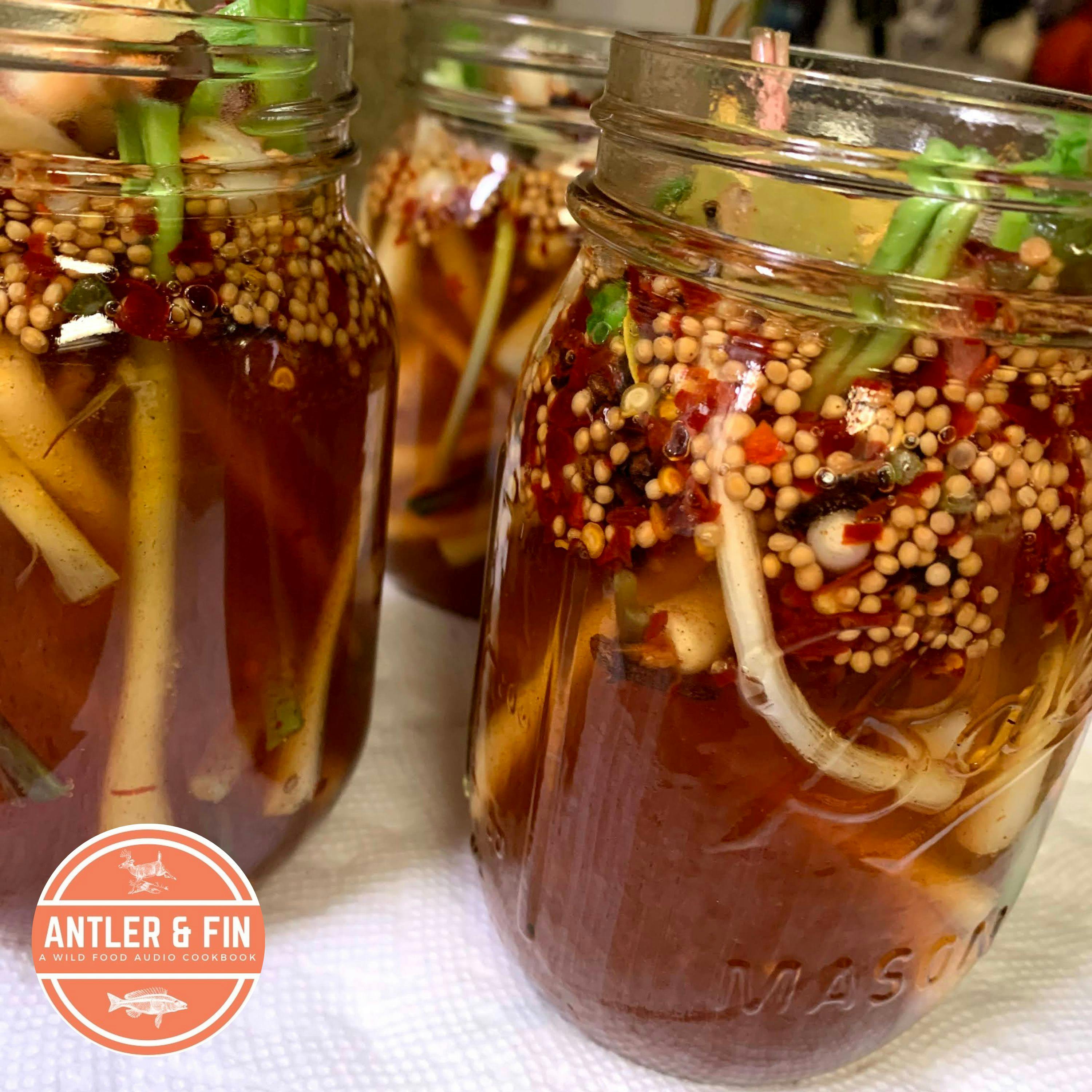Pennsylvania Pickled Leeks and Ramp Harvesting Dos and Donts

b'It\\u2019s that time in Pennsylvania!\\xa0 So while you\\u2019re out scouting or hunting for turkeys, keep your eyes and nose open for these springtime plants. The pickled leeks go great on a sandwich or make a perfect quick snack.\\xa0\\nRead the written version of this recipe as prepared by Kory Slye\\nRate this Podcast\\xa0\\nListen to our other podcasts here\\nBuy our Small Batch Wild Food Spice Blends\\xa0\\nAbout Wild Leeks:\\nAlso known as ramps, wild garlic, wood leeks, ramson, and even very erroneously as spring onion, Allium tricoccum is a type of wild onion or garlic that can be found over much of Canada and the US.\\xa0\\nThey appear in the early spring in moist and shady woodlands with rich soil and are usually one of the first spring ephemerals to actually show up.\\xa0\\nPopping up around March in Appalachia, you can expect to see them around the Great Lakes in April and in early May if you go further north. The plant can be found from Nova Scotia down to Georgia north to Hudson\\u2019s Bay, and west to around Iowa and Manitoba.\\xa0\\nThe plant starts in the spring by sending out one to three broad green leaves from each bulb, which will be shallowly buried under the soil. The leaves are usually around 20cm or 8 inches long and have a red or burgundy section between the bulb and the main leaf. Bulbs tend to grow in bunches of two to six.\\xa0\\nClusters of bulbs will usually put out just one flowering stem once the leaves die back and the plant will flower as early summer progresses. The flowers, a white umbel much like many other allium flowers, give way to shiny black seeds before the plant disappears again until springtime.\\xa0\\nRamps will always smell strongly of garlic when lightly crushed, which is a great way to tell them apart from poisonous look-alikes like lily of the valley, or less dangerous plants like trout lily. If it doesn\\u2019t smell oniony or garlicky, then it\\u2019s not a ramp!\\nBoth the leaves and the bulbs of ramps are edible and they have a very interesting flavor that is somewhere between garlic, leeks, and onions, but with an added woodsiness that\\u2019s hard to explain.\\xa0\\nExtremely versatile in the kitchen, they can be inserted into basically any recipe using onions or garlic and will amp up the flavor beyond what either onions or garlic could have done.\\xa0\\nFirst Nations peoples would often use them medicinally, with the Chippewa using the roots in a preparation that would induce vomiting, the Iroquois using a ramp tonic to treat intestinal worms, and the Cherokee using a similar tonic to treat colds, and the juice from the bulbs to treat earaches.\\xa0\\nThey were eaten as food as well, usually boiled or fried on their own or with meat as a flavourful and healthy springtime delicacy. The Ojibwa people would dry the plants out for use in the winter. I bet the burst of flavor the dried plant would add to winter stews was highly prized!\\nIt\\u2019s said that the name for Chicago actually comes from the Me-nominee Nation\\u2019s word for the plant, shika\\u2019ko. Apparently, wild leeks used to be very abundant where Chicago now stands.\\xa0\\xa0\\nThe people who settled into the Appalachian mountains quickly took to the ramps that covered the forest floor there. They would often fry them in animal fat, but would also use them raw in a salad, or cook them up in potato or egg dishes.\\xa0\\nThere would often be springtime festivals celebrating the ramp in Appalachia, and the plant was once known as a bit of an Appalachian vegetable even though it grew in many other places.\\xa0\\xa0\\nAbout Adam Berkelmans:\\nAdam Berkelmans, also known as The Intrepid Eater, is a passionate ambassador for real food and a proponent of nose-to-tail eating. He spends his time between Ottawa and a cozy lake house north of Kingston, Ontario. When not cooking, he can be found hunting, fishing, foraging, gardening, reading, traveling, and discovering new ways to find and eat food.\\nFollow Adam on Instagram\\nVisit the Intrepid Eater website\\xa0\\nLearn more about your ad choices. Visit megaphone.fm/adchoices'